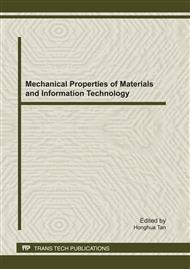p.109
p.116
p.121
p.126
p.130
p.136
p.143
p.149
p.156
Design and Performance of the Double Dislocation Perforated Shielding Plate Used in Vacuum Arc Deposition for High Quality Coating Deposition
Abstract:
Based on the different movement characteristics of macro-particles, ions and electrons in the plasma transmission, this paper developed a simple, easy device with low cost-- double dislocation perforated shielding plate used in the coupling enhanced magnetic field, which can also satisfy the requirements of preparing high-quality films; This paper also studied the impact of double dislocation perforated shielding plate on the transmission of arc plasma and film properties. The results showed that: compared with the physical fielding plate, in the realization of the resistance to macro-particles transferred in straight line, part of the ions can also pass through the perforated position in the double dislocation perforated shielding plate to increase the ion density behind the fielding plate, thus increasing the film’s deposition rate to some extent. At the same time, the double dislocation perforated shielding plate can significantly reduce the roughness of the film and improve the film's finish, while the film structure does not change.
Info:
Periodical:
Pages:
130-135
Citation:
Online since:
September 2011
Authors:
Price:
Сopyright:
© 2012 Trans Tech Publications Ltd. All Rights Reserved
Share:
Citation:


